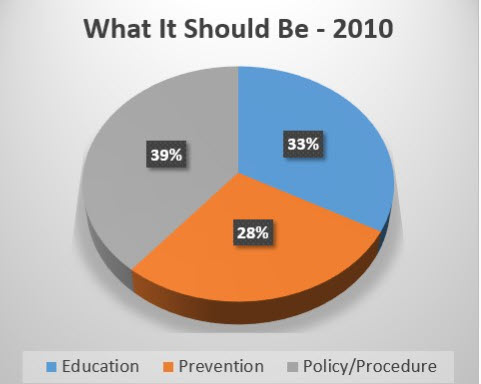Substance Abuse in Organizations – The Small Business Perspective

Jim Schreier
Organizations face different types of problems in dealing with workplace substance abuse based on the industry, the product or service involved, and the size of the organization. Larger organizations face a greater probability of substance abuse, and they can more easily commit resources to preventive and treatment programs. Smaller organizations often find it more necessary to have strict policies because they do not have the resources in people or money to compensate for the lost productivity of a particular employee. Based on 40+ years of research on the challenges of substance abuse in organizations, a key observation is the variety of responses and the changes in the dynamics of the problem based on organizational size. While it stands out, it is not surprising. It simply reflects the growing complexity of the work environment and the continued need for better information on the relationships between some of these complex variables.
In the 2010 survey, smaller organizations, particularly those with less than 100 employees, experienced a lower incidence of “direct contact” of on-the-job substance abuse. While there was still reported incidence for employers at all levels, smaller organizations often reported incidents at 30-50% lower rates than larger organizations. One of the most intriguing results from the same survey was that a much higher percentage of respondents, 50%, in the 1-99 employee category saw the problem as getting worse in the next five years. Organizations in the 100-499 category also saw the problem as getting worse and although it was a slightly lower percentage, 43%, these responses were significantly lower than larger organizations, in most cases who responded that they saw the problem as either remaining the same or getting better.
The smaller organizations, for the most part, reported their experiences as the same or more serious than five years ago at percentages very close to the overall results and those for larger organizations.
Looking farther back into the data reported in previous surveys, there are some interesting observations:
- Although the majority of smaller organizations still reported incidents with most “drugs,” the differences were 20-30% less than larger. Unfortunately, the differences were less for experiences with alcohol – the drugs most organizations have been unable to avoid.
- Going back to 1992, a large percentage of respondents from smaller organizations, 44%, saw the problem as less serious – double the overall reported rate. By 1998, however, 46% saw the problem as more serious matching within one point of the overall response to the question.
- The historical responses showed that smaller organizations were slightly slower to implement policies – but the response rate still hit 100% with policies by 1998.
- A curious result in 1992, showed that smaller organizations reported a significantly less serious problem detecting drug use that the overall average, 3.5/10, versus 5.1/10. However, by 1998 detecting drug use became the #1 problem the smaller organizations reported – slightly higher than the overall level reported, 6.3 versus 5.7. It is important to note that detecting drug use has been consistently the #1 problem for all organizations over most of the years of the research.
One of the questions asked in the research on substance abuse in organizations, almost from the beginning, has been the role education, prevention, and policy in addressing the problem. We’ve regularly asked respondents to report on the way it “is now” versus the way it “should be.” In this case, the results for most size organizations have been similar. It’s interesting to note that organizations of all sizes see this gap between “is now” and “should be” as the same.
The challenges for smaller organizations are very similar to the challenges faced by larger organizations. In one sense, that’s disappointing. It is perhaps too optimistic to hope that smaller organizations might be able to experience few incidents of substance abuse – and to some extent they do – but the difference is less than hoped for. At the same time, smaller organizations appear to face the same challenges as large organizations so that they can learn from the experiences from organizations of all sizes.


